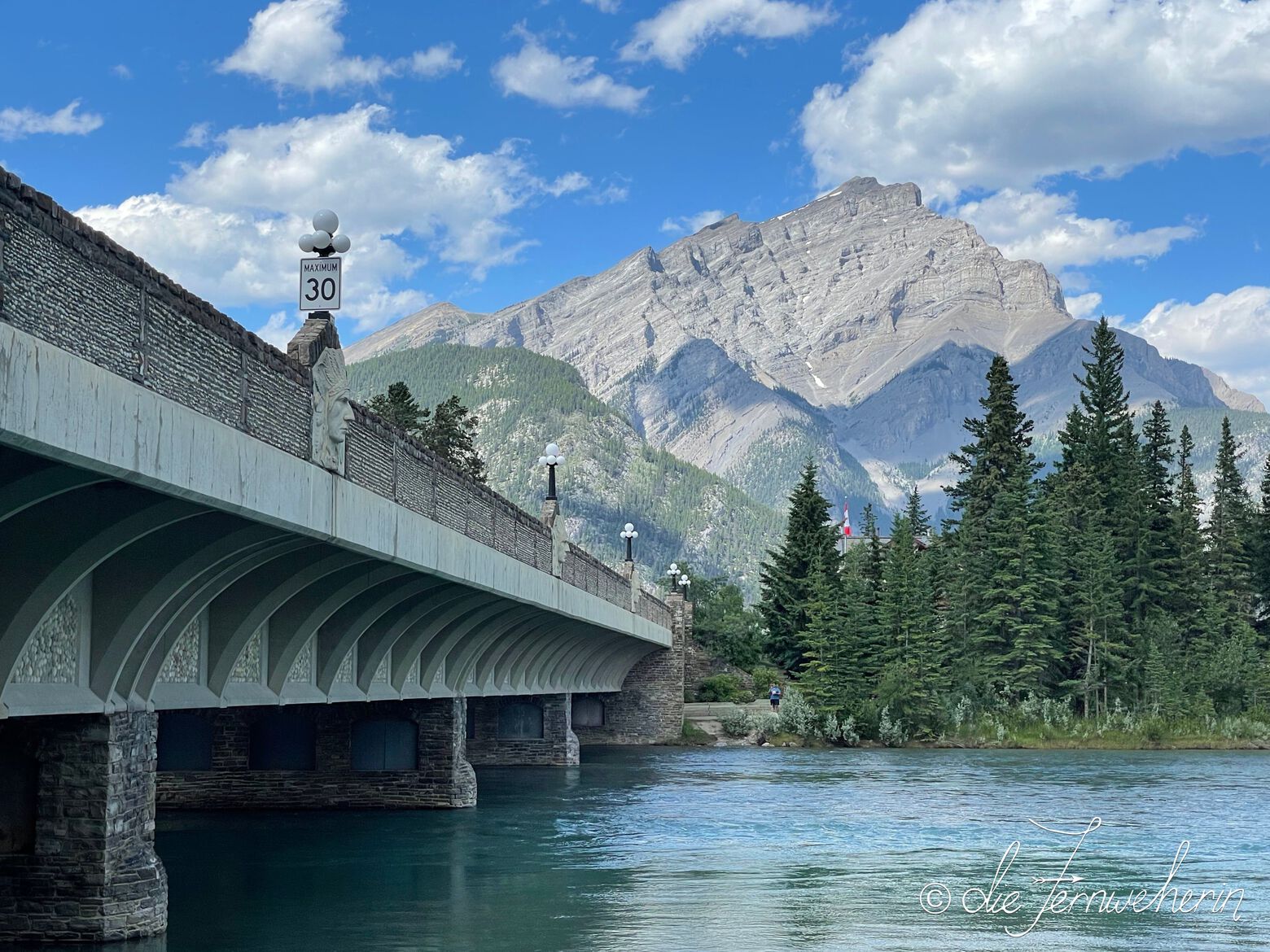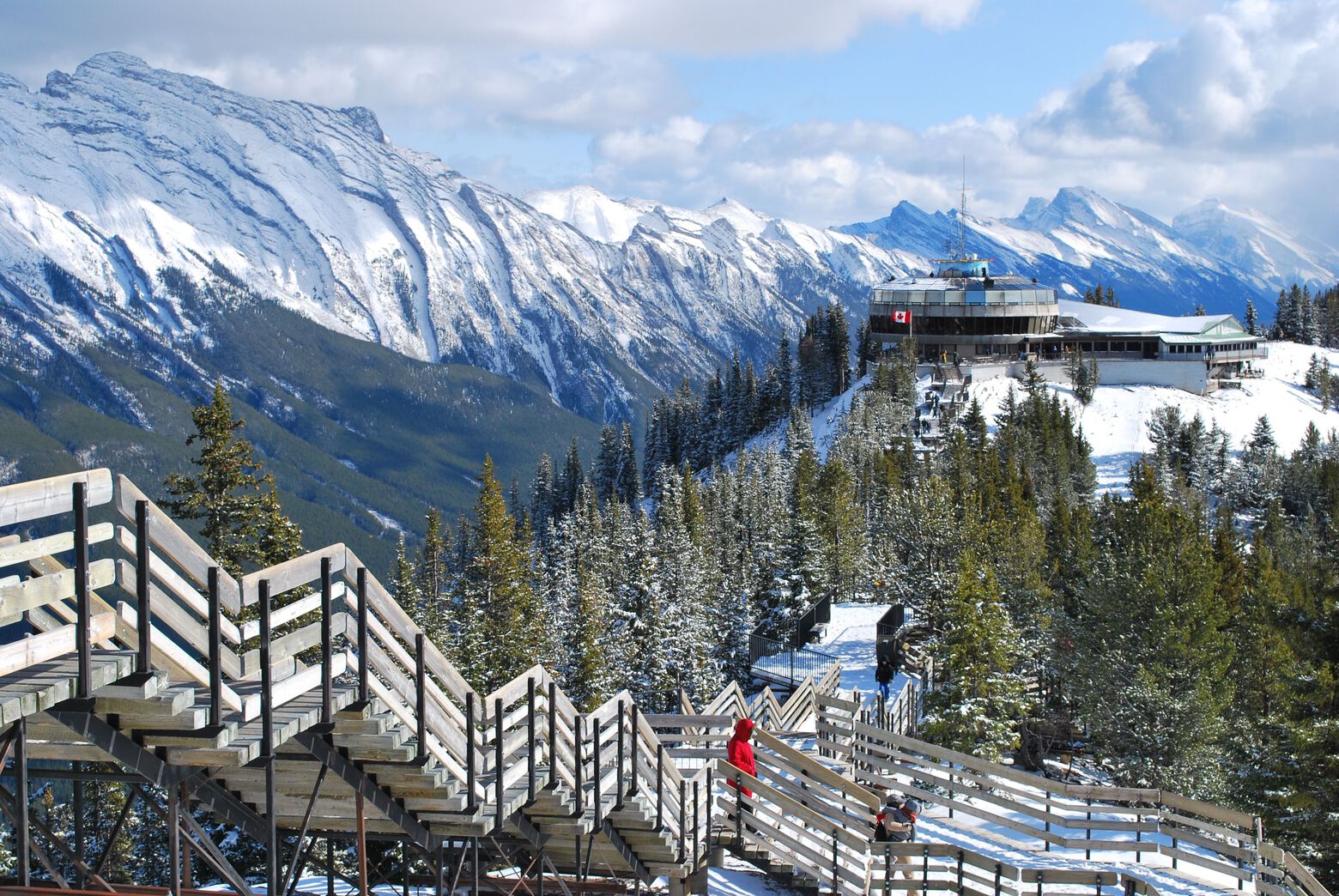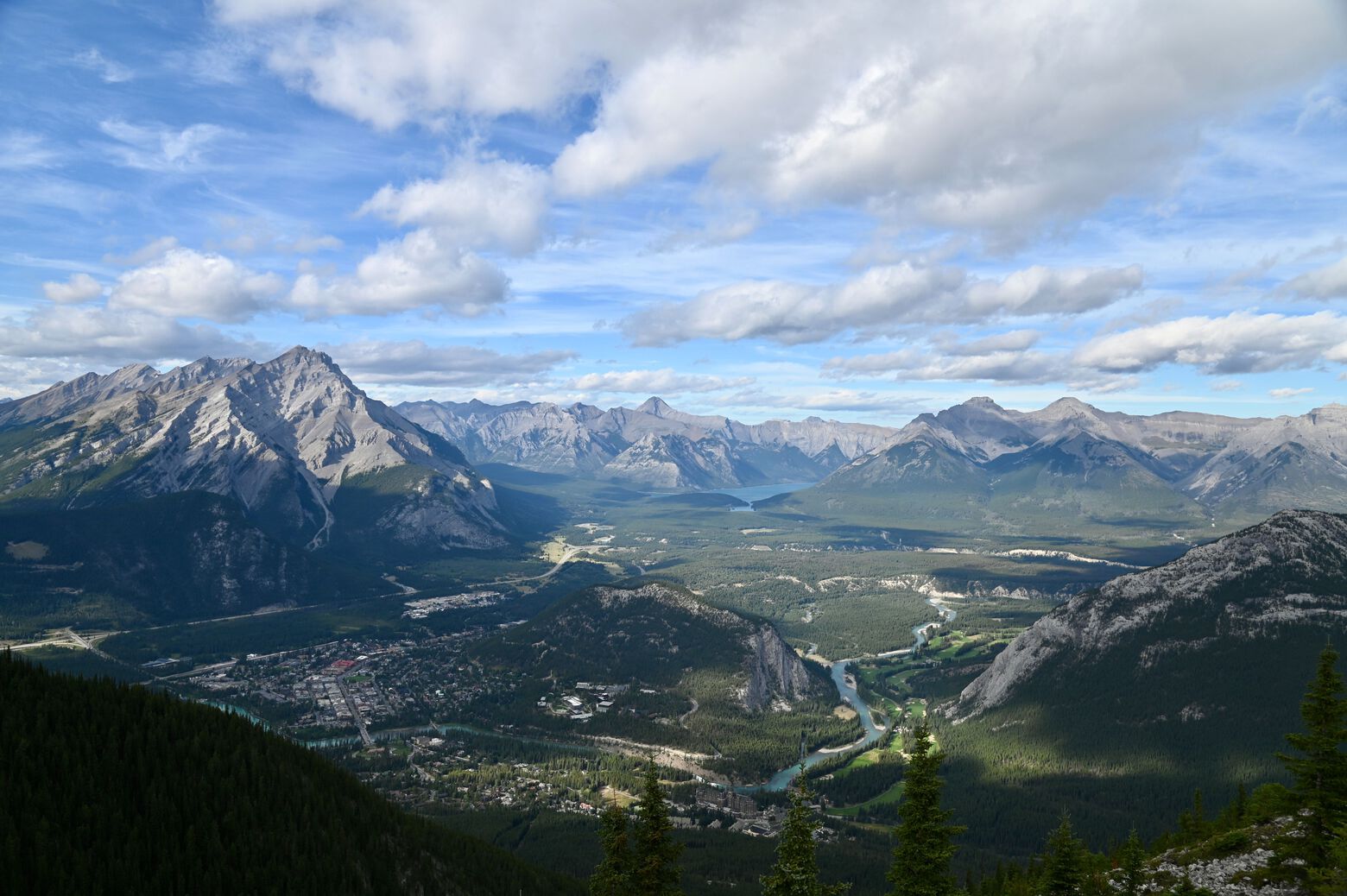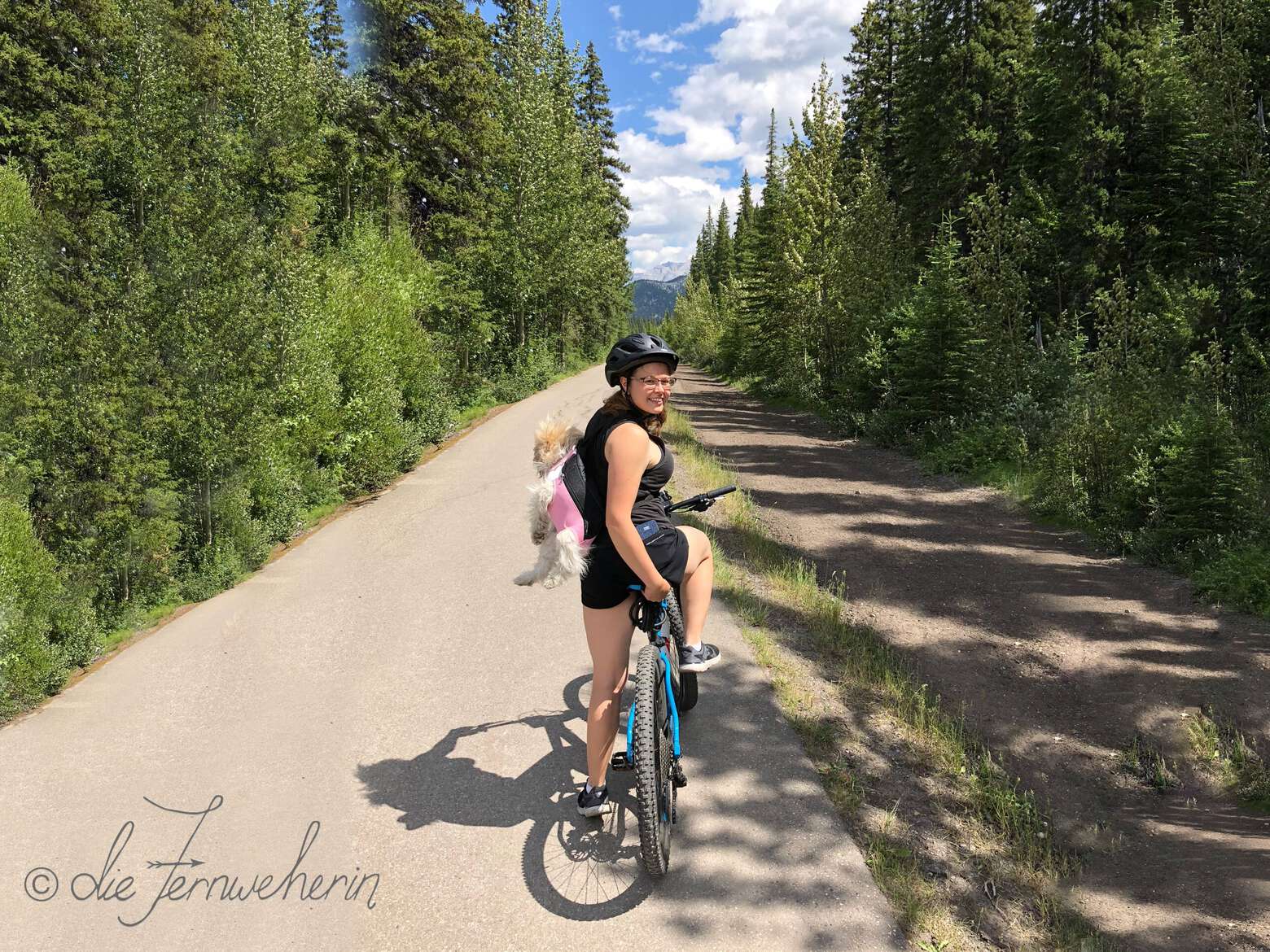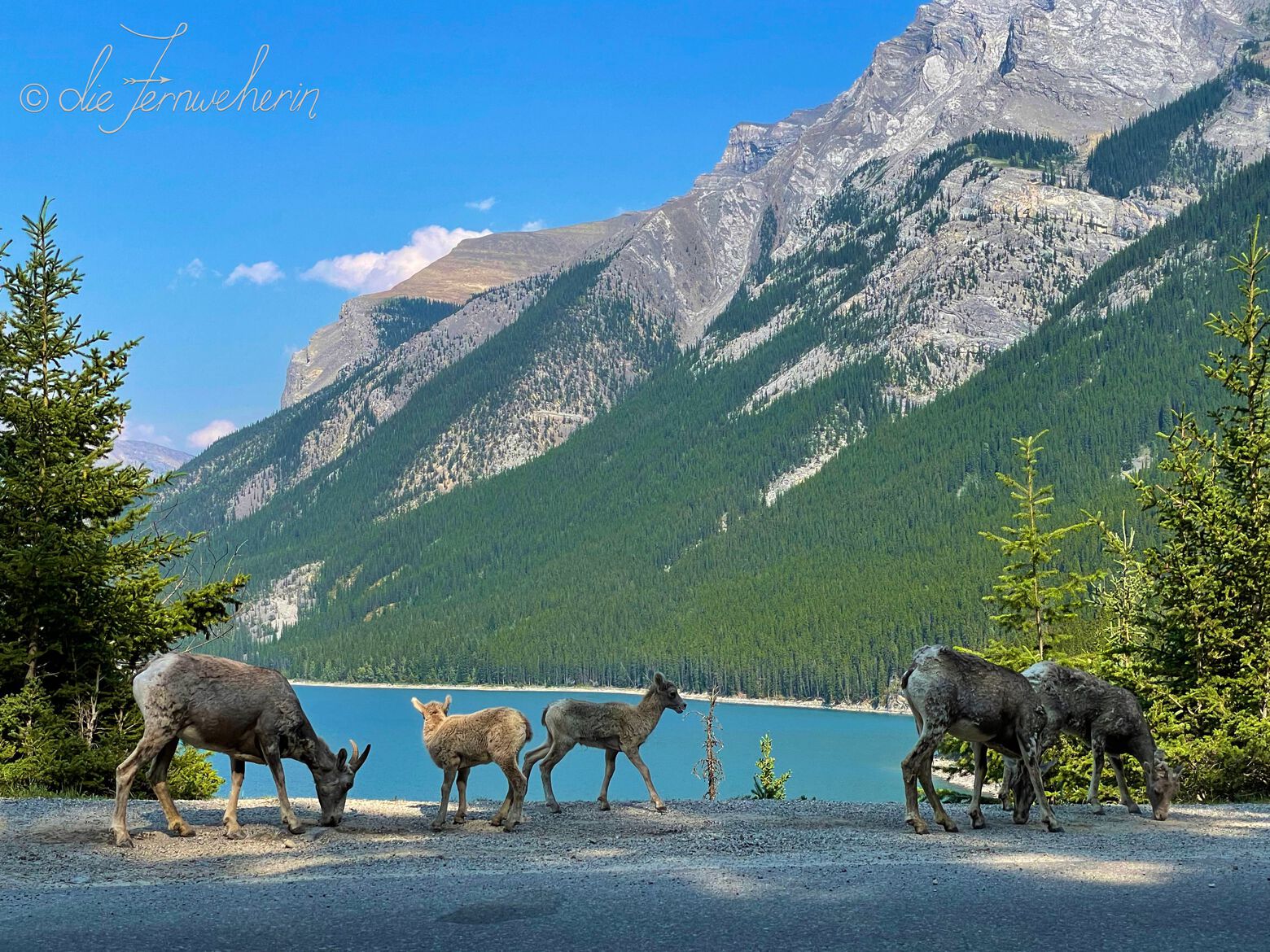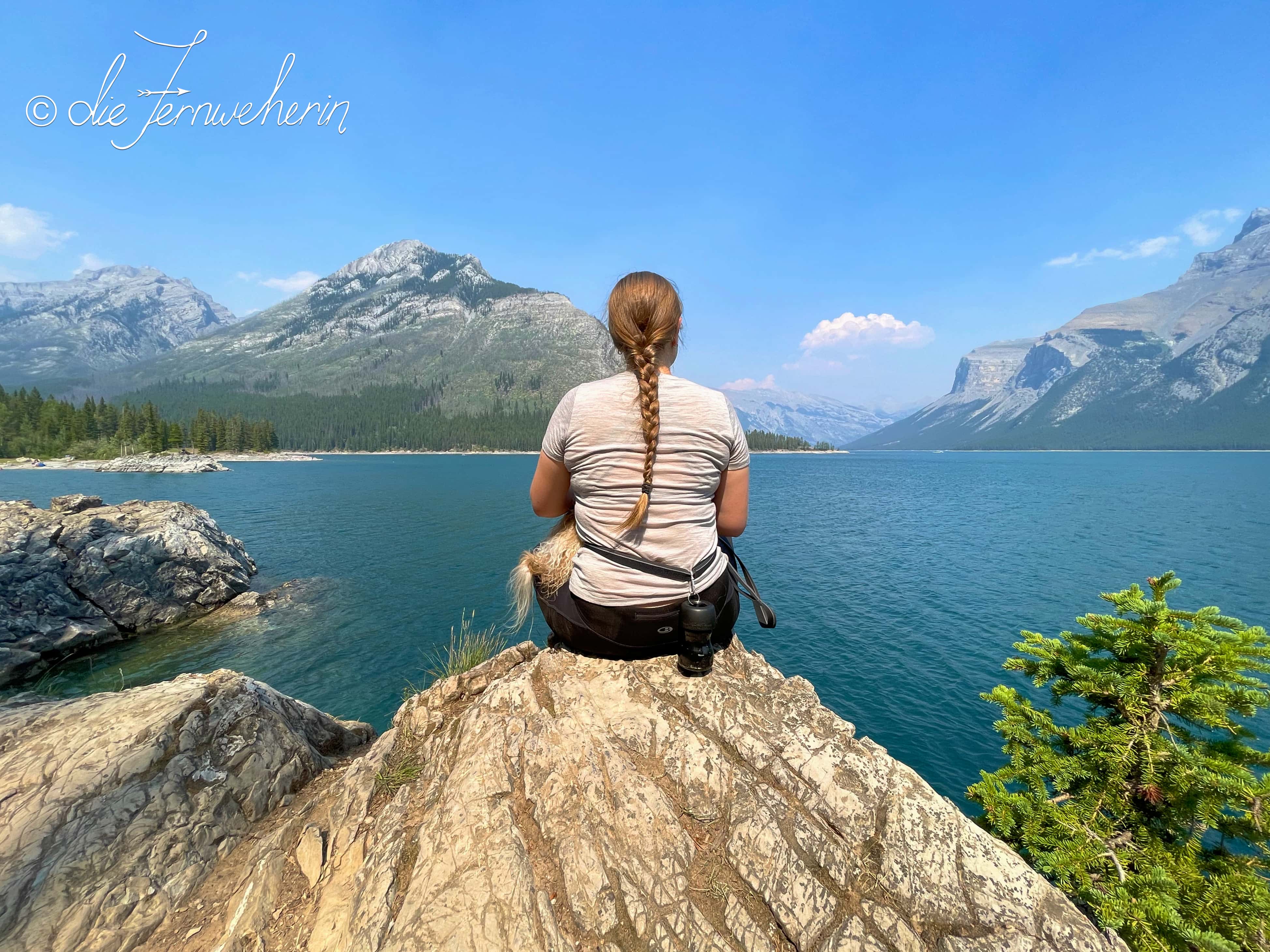Now that I’ve covered the fundamentals of planning a trip to Banff, it’s time to delve into the specifics of where to go & what to do. In this post I’ll cover the first half of my itinerary, exploring the highlights in and around Banff townsite. During these three days you’ll take a dip in Banff’s famous hot springs, enjoy several of its stunning mountain-top views, and visit the largest of its beautiful blue lakes.
Keep in mind that this itinerary starts off a bit slower to let you get acclimatized, in case you are jet-lagged, live at or near sea level (elevations in Banff are between 1000-2800 metres; not enough to cause altitude sickness, but enough to cause you to be a little extra short of breath on exertion), or if you need time to get set up or settled in. If you’re raring to go and arrive early enough on the first day (no later than the early afternoon), chances are you’ll be able to complete Day 1 & 2 together, shortening this portion of the itinerary to two days.
pin this post!
Highlights In & Around Banff Townsite
Contents
Day 1
Start getting excited, because this is the day that you arrive in Banff! Or at least it will be, sometime in the future. But if that makes you feel disappointed, then STOP—because I’m here to help you see that planning vacations can actually be part of the fun of travelling. So allow yourself a happy little chair-dance, and let’s get going!
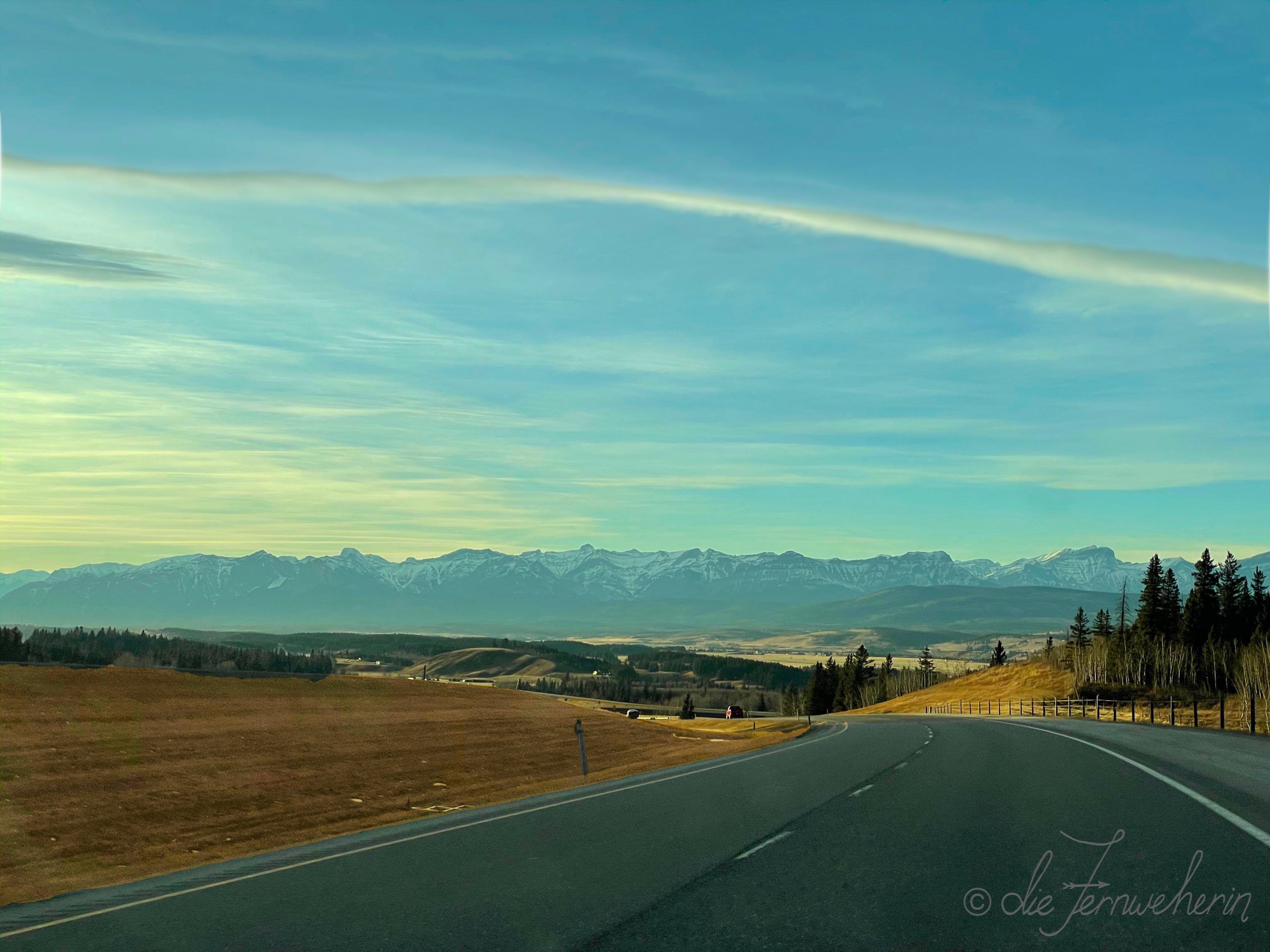
If you’re driving, then getting to your accommodation in Banff, Canmore, or Lake Louise is as simple as it gets, whether you’re starting in BC or Alberta: they’re all a straight shot down the Trans-Canada Highway (Hwy 1). To get there without a vehicle, you’ll need to book a shuttle with a private company. These depart from Calgary, the closest major city; typically they leave directly from the airport, but one or two also stop at various hotels in the city. A couple different options not listed on Viator are RTB ($88 roundtrip, from Calgary to Banff townsite, per adult), or Brewster ($130).
The check-in time for hotels is usually 4:00pm (aka 16:00 for my fellow 24-hour clock users), but if you arrive earlier most will hold your luggage for you if you want to head out and explore. If you’re camping, you can check-in to your site anytime after 2:00pm (14:00).
<< contents
Day 2
To kick off your trip to Banff, what better place to begin than where it all started? Today you’ll explore the town of Banff itself, learn about (and visit) the famous Banff hot springs, and take a gondola ride up Sulphur Mountain for a picture-perfect finish. There’s a lot to do in town, so feel free to pick and choose activities that fit in with your priorities, or just those that strike your fancy. You should be able to complete the itinerary as described in three to six hours.
What to do
<< contents // how to get there >
downtown banff
hot springs > // gondola >
To start your day off right, make your way to the Banff’s main thoroughfare: Banff Avenue. Here (along with Bear Street, one block over) is where the majority of the town’s galleries, restaurants, and shops are found.
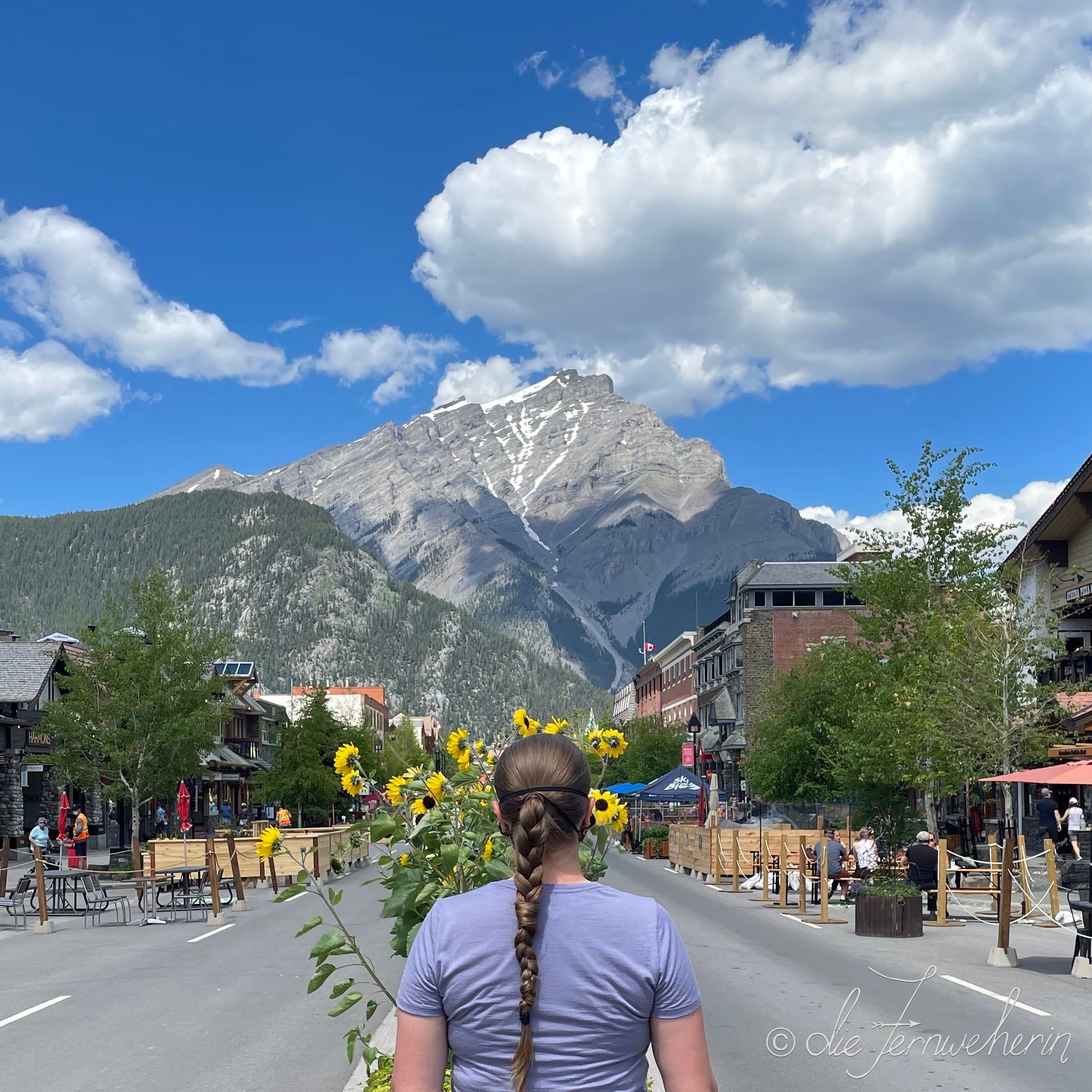
Some of my personal favourite places to visit include:
- All in the Wild Gallery & Brandon T. Brown Wilderness Gallery for beautiful artwork including paintings, photographs, and sculptures.
- Banff Candy Store for a stupendous variety of treats with which to satisfy your sweet tooth.
- Banff Dog House for treats, toys, jackets, and more.
- Banff Trading Post for authentic Indigenous-made goods.
- Big Bear Trading Company & Branches Marketplace for souveniers, from the typical (T-shirts) to the unique (candles in scents such as ‘hot springs’ and ‘maple syrup’).
- Little Blue House for the punniest pyjamas you’ll ever see.
- Rocky Mountain Flannel Company for cozy, lumberjack-esque apparel.
- Spirit of Christmas for any and all the decorations you could ever want.
Of course, there’s much more to Banff than shops! To learn more, check out my series of posts about Banff Townsite: 50+ Things To Do in the Town of Banff & Fantastic Hiking Trails in the Town of Banff.
hot springs
gondola >
Next, head to Cave & Basin National Historic Site to learn more about the founding of the first National Park in Canada. Tickets are $9 per adult, unless you purchased an annual Discovery Park Pass, in which case they are free. Once you’ve finished learning about the history of the hot springs, it’s time to experience the real thing! Head up Sulphur Mountain a little ways to the Banff Upper Hot Springs. Admission is $9 per adult, with swimsuit and towel rentals available for an extra charge.
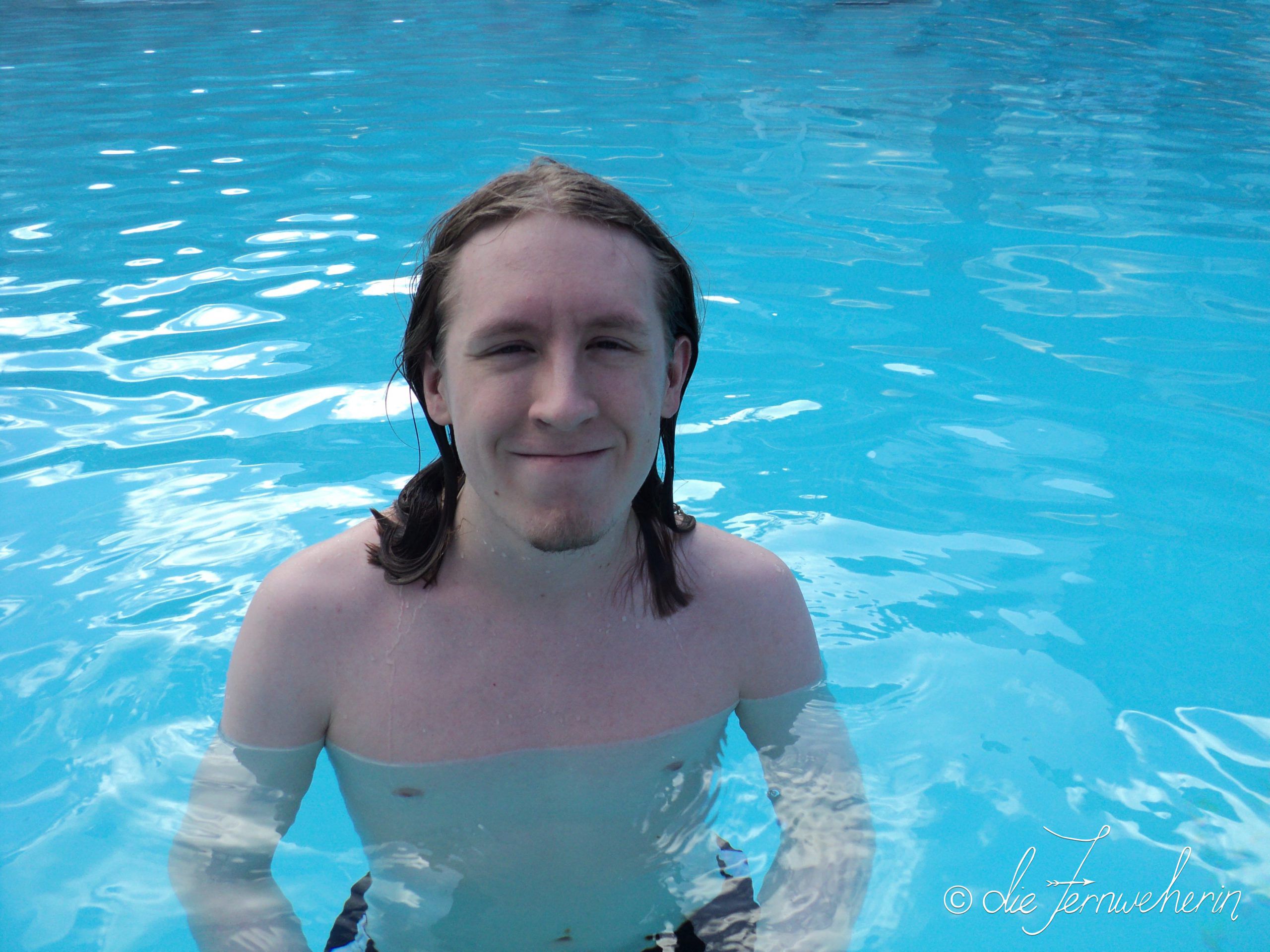
gondola
Finally, to cap off your first full day in Banff, catch a ride up to the summit of Sulphur Mountain on the Banff Gondola. Tickets are approximately $50 roundtrip per adult, with prices fluctuating depending on when in the week you book, and whether or not you purchase your tickets in advance. While admittedly quite touristy, it does offer exceptional views. If you’re travelling with kids, there’s an interpretive centre at the top that’s sure to peak their interest; and if you’re a couple looking to make the evening extra special, you can book a package deal that includes dinner on top of the mountain at the award-winning Sky Bistro ($115 per adult on average). If a gondola ride is out of your budget, you can also hike up the mountain for free; the roundtrip hike takes about three to four hours to complete.
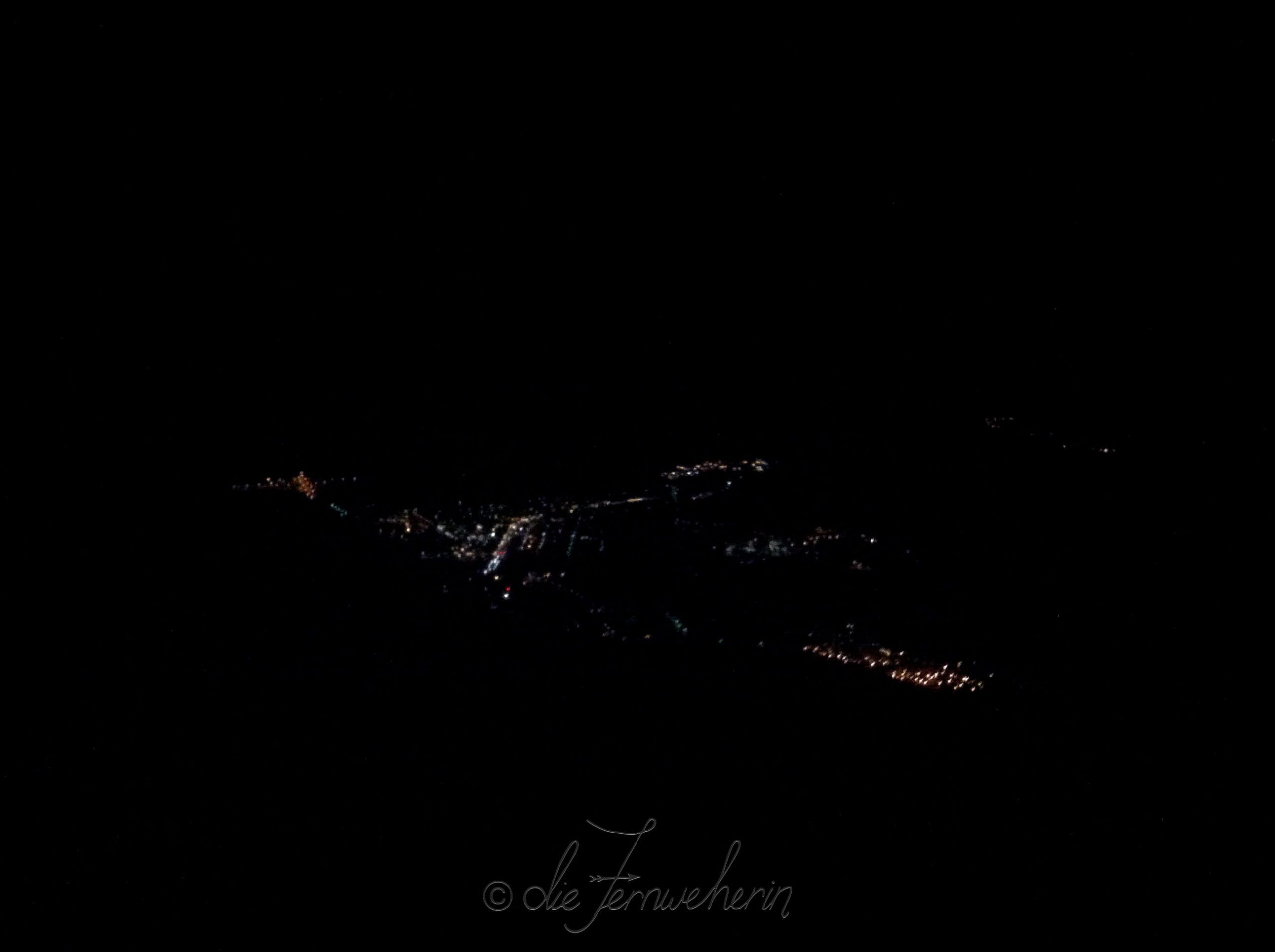
While admittedly quite touristy, the Banff Gondola does offer exceptional views.
How to get there
<< contents
driving
To access Banff from Canmore, head west on Hwy 1 for about 20km, at which point you will have to choose between two exits for the town itself. For the purposes of completing today’s itinerary take the second exit for Norquay Road, then turn left following the signs for Banff town, and keep on keeping on down this same road, which for some reason goes through about a bajillion name changes within a few short kilometres (this phenomenon is very common in Banff). When you reach the four-way stop, take another left onto Buffalo Street, and you’ll find yourself right on the edge of downtown Banff. The entire drive takes about 25 minutes.
To get to Banff from Lake Louise, head east on Hwy 1, take the first exit for Banff, turn right, and then follow the rest of the directions as written (40 minutes).
To reach Cave & Basin from downtown Banff first cross the river, then turn right onto Cave Ave and continue straight down the road for just over 1km until you reach your destination. To get to the Banff Upper Hot Springs, head back along Cave Ave, but instead of turning onto the bridge keep going straight, turn right onto Mountain Ave, drive for about 4km until you come to a ‘roundabout’ (which is actually just a fancy fork in the road), take the first exit (keep right), and then turn left into the parking lot. The gondola parking lot is immediately adjacent to the one for the hot springs; the easiest route between them is a walking path at the south end of the lots.
There is free parking available at all each of these attractions; however, much of the parking in downtown Banff requires payment ($3 per hour from May through October, and $2 per hour from November through April). This is convenient if you are only planning on being in town for an hour or two, but if you want to wander the streets for longer—or you’re just cheap, like me—then there is free parking available (limited to nine hours in one location). The largest lot is located by the Banff Train Station; it takes five to ten minutes to walk from here to downtown, and on the weekends there is a free shuttle operated by Roam Transit. Other options closer to town include street parking along Bow Avenue, and the upper floors of the Bear Street Parkade.
public transportation
Banff townsite itself can be accessed via public transit from several locales. From Canmore, take Roam Transit Route 3. An adult 1-day pass costs $15, and can also be used on the local Banff buses (see below); the trip ride between the two towns takes about 25-30 minutes. From Lake Louise, take Roam Transit Route 8X ($20 & 50-60 minutes’ travel time). You can also take transit from some of Banff’s main campgrounds; Tunnel Mountain Village I & II are serviced by Roam Transit Route 2, while Two Jack Main and Two Jack Lakeside are both on Roam Transit Route 6. Taking the bus from your campground into town is free, although you do need to pay for your return fare (prices below). The trip into town from Tunnel Mountain takes 10-15 minutes, and from Two Jack it takes about 20 minutes.
Cave & Basin can only be reached by public transit from May through September using the seasonal Roam Transit Route 4. The bus ride takes just under 10 minutes from downtown, and there are several stops throughout Banff. Banff Upper Hot Springs and the Banff Gondola are accessible year-round via Roam Transit Route 1 (both approximately 10 minutes from the town centre). A one-way fare on any of these local Banff buses costs $2 for an adult, with day passes available for purchase for $5. If you purchased a day pass for a regional bus from Canmore or Lake Louise, it is also valid for use on any of the local routes.
other options
< driving
As I mentioned in Part 1, Banff is eminently walkable; even the further-flung attractions, such as the hot springs, are within an hour’s walk from the heart of town. You can also get around very easily by bike (in fact, if you’re staying in Canmore then the Legacy Trail to Banff is one of the most recommended bike rides in the area). Free, secure bike parking is available downtown at the Banff Bike Valet while you explore on foot.
<< contents
Day 3
After exploring the town of Banff, it’s time to visit some of the surrounding highlights, both natural and man-made. How you experience them is up to you, and depends heavily on what season you’re visiting in, so read on to find out more. Today’s activities should take four to twelve hours to complete.
What to do
<< contents // how to get there >
lake minnewanka
mount norquay > // vermillion lakes >
You’ll begin today with a visit to Lake Minnewanka, the largest expanse of clear turquoise blue water you’ll see in Banff, and the most conveniently close to town. The name comes from the indigenous peoples of the area, specifically the Stoney tribe, who called it “Minn-waki” (Lake of the Spirits). In 1886—a few years after Banff National Park itself was first established—the first log hotel was built on the lakeshore, and within two years Minnewanka Landing was born, a small but thriving tourist town. In 1941, however, the village was flooded following the construction of a dam to provide power to nearby Calgary for the war effort.
Nowadays, you can visit this hauntingly well-preserved underwater ghost town as a scuba diver, but if you don’t have your certification (or just don’t fancy diving in frigid glacial waters) there are still multiple ways to explore this gorgeous lake. Start by walking along the lakeshore and taking in the views; if you wish, you can extend your hike a little to visit Stewart Canyon (an easy one hour roundtrip, and also do-able in the winter with showshoes or boots & crampons). If you elect not to visit Mount Norquay next, consider continuing along the opposite side of the lake for a spell—and, if you’re an experienced hiker and up for a full day trek, all the way to Aylmer Lookout.
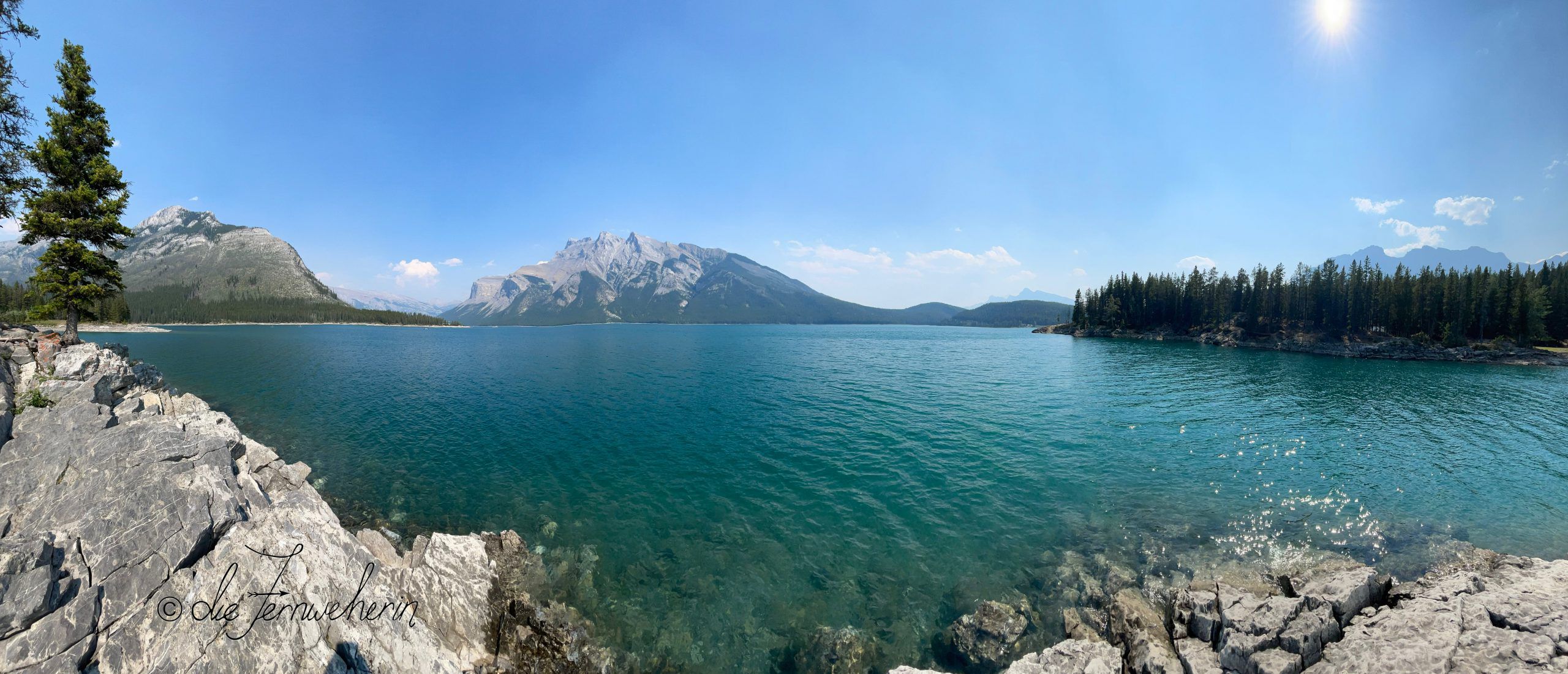
Lake Minnewanka: the largest expanse of clear turquoise water you’ll see in Banff National Park.
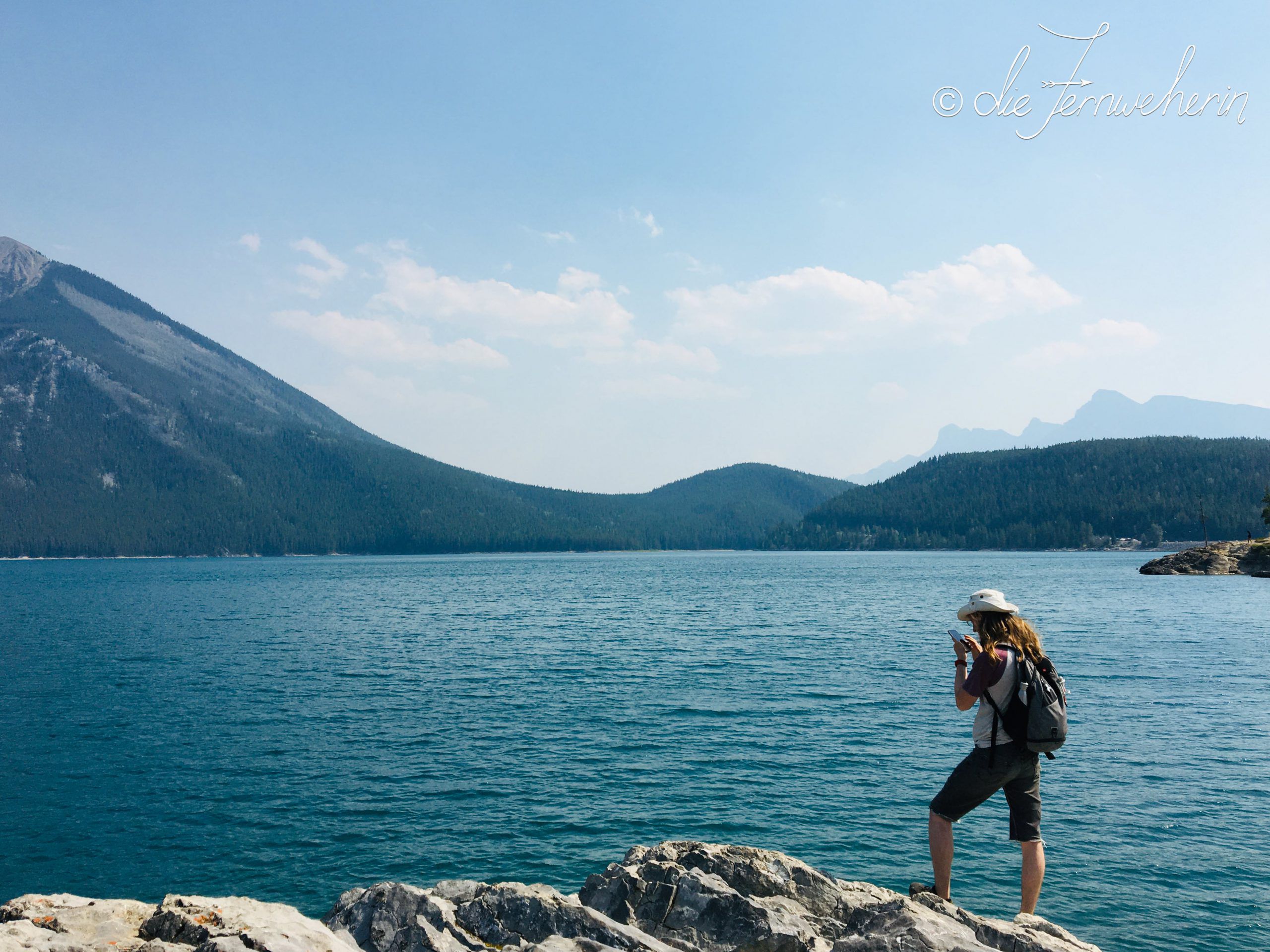
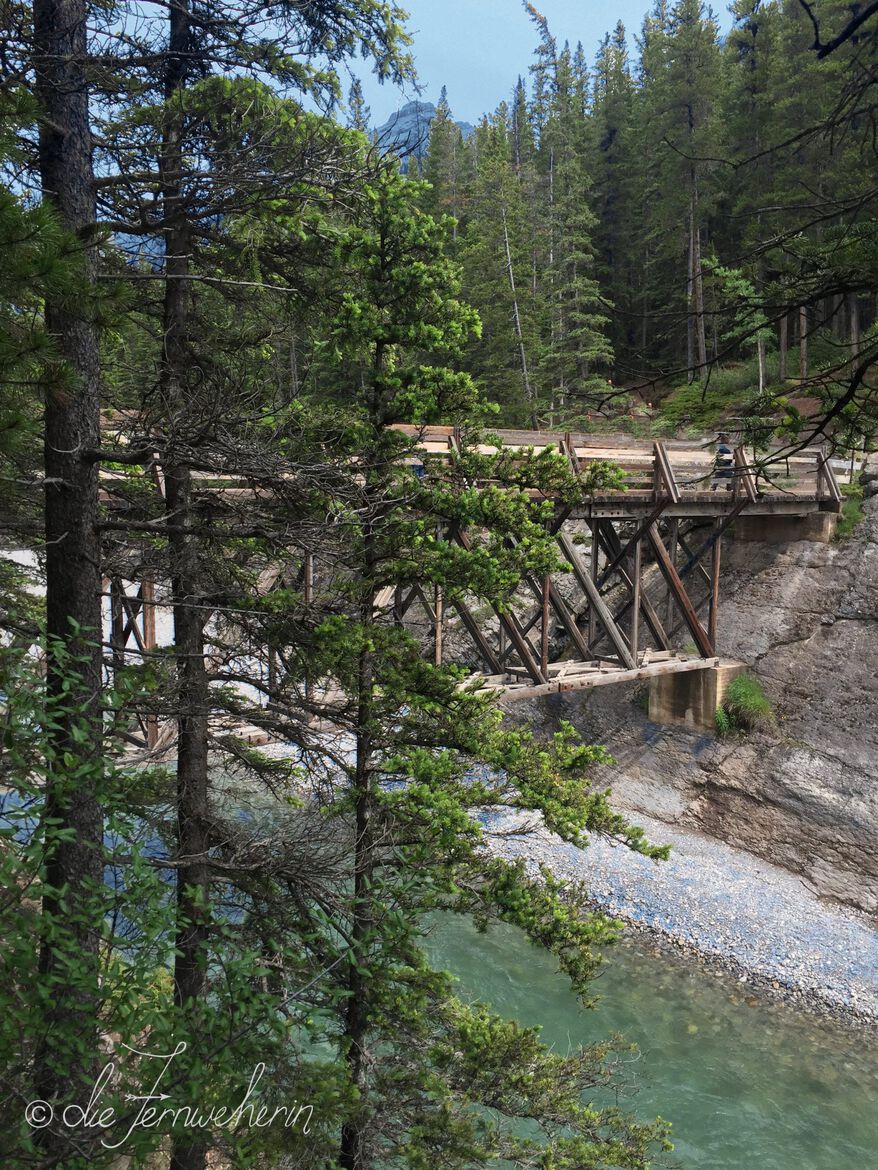
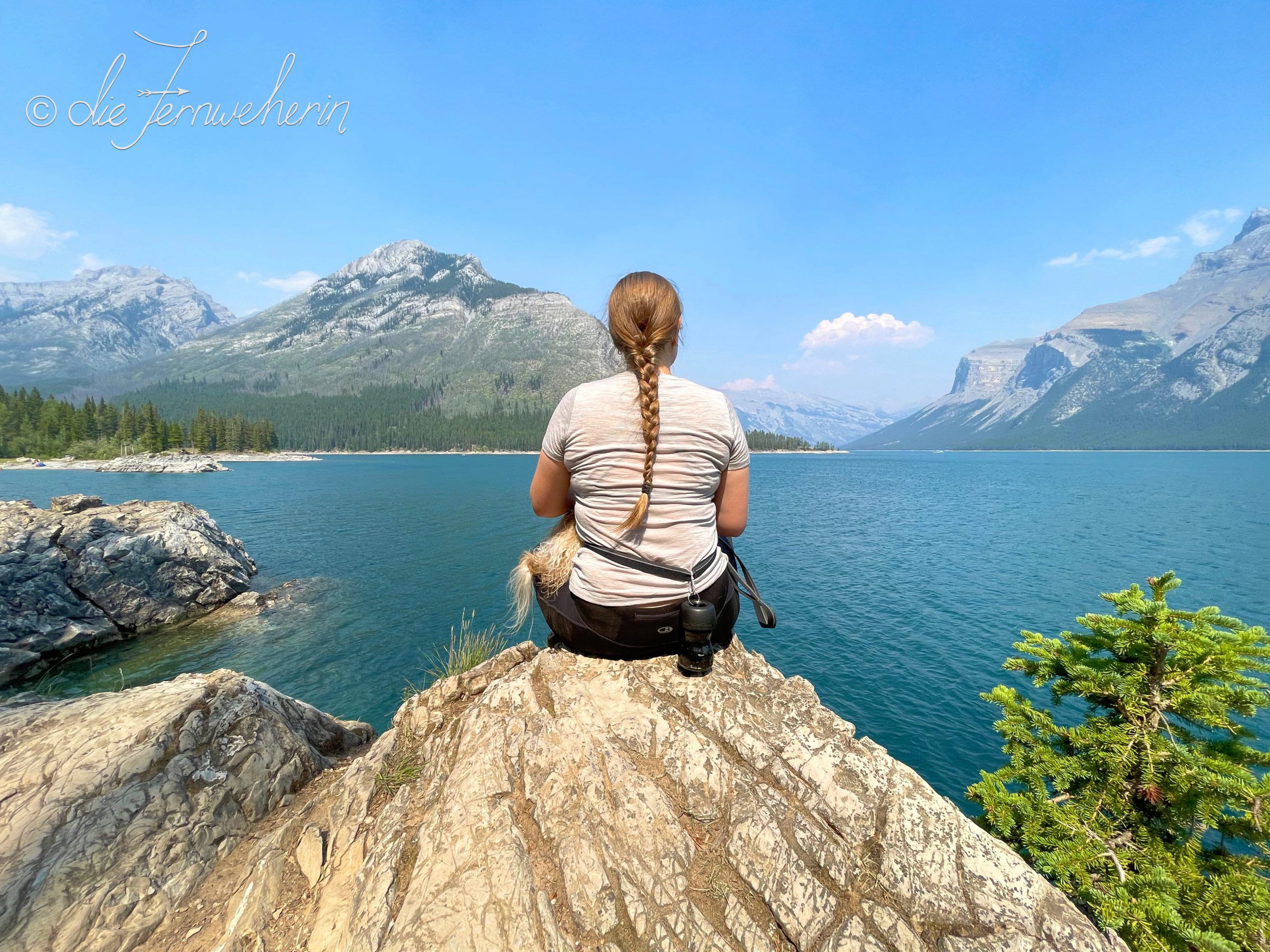
If hiking’s not your thing, or if you want to learn more about the history in the area, perhaps you’d like to take a cruise on the lake ($69-$95 per adult, available from May to September, and ranging from 60-90 minutes in length). Visiting in the winter? Lake Minnewanka is a popular spot for ice skating. Depending on how much time you have left after you’ve finished here, you may want to visit ultra-reflective Two Jack Lake, and/or the abandoned coal mine at Lower Bankhead (in my opinion, one of the most underrated sights in the area), before you continue on with your day.
mount norquay
In the summer, Mount Norquay operates a sightseeing chairlift that offers extraordinary panoramic views of the town of Banff and Mount Rundle ($41 roundtrip per adult). It’s a perfect spot to enjoy lunch, whether you want to bring along a picnic or eat at the teahouse-inspired Cliffhouse Bistro. Norquay also offers a spectacularly memorable experience in Via Ferrata, a unique fusion of rock climbing and scramble-style hiking that’s sure to get your adrenaline pumping ($184-$473 per participant, with tours ranging from two to eight hours in length).
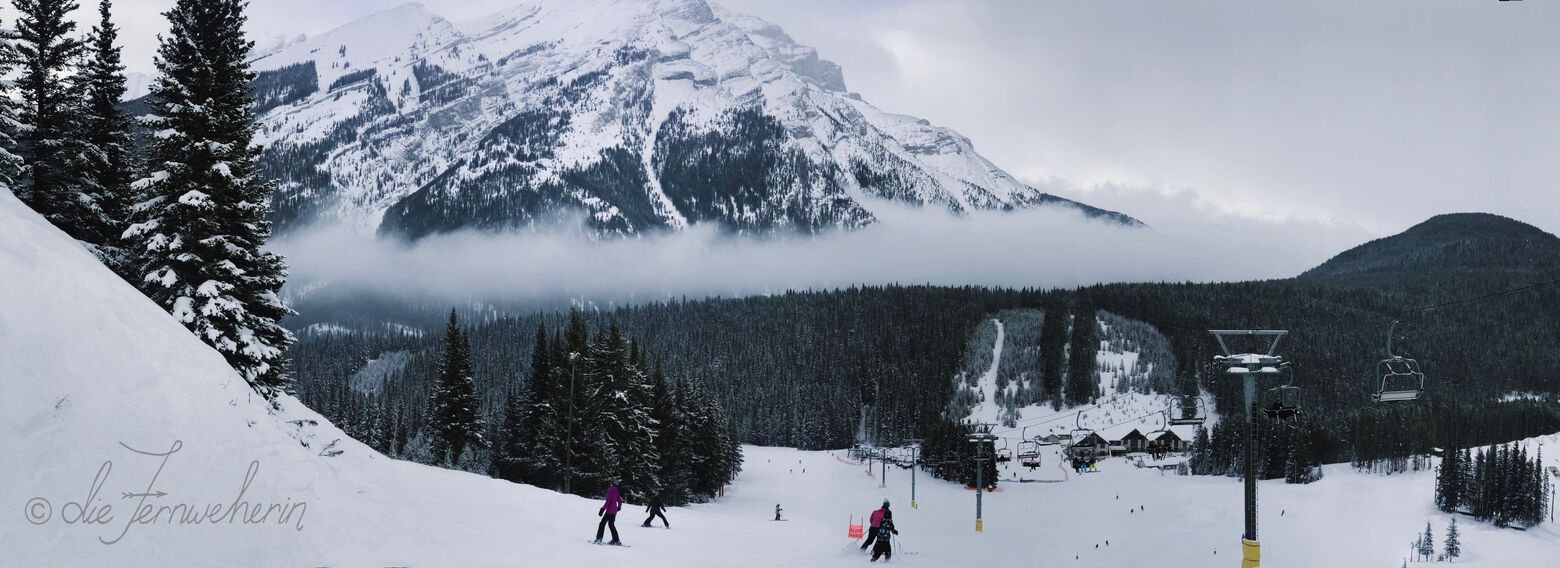
Come winter, Norquay is one of Banff’s famous “Big 3” ski hills. While smaller than Sunshine or Lake Louise, if you’re a beginner or just not up for a full day of skiing, it’s a great option. Of the three it’s closest to town, cheapest, and has the best tubing park. A half-day lift ticket will run you $83 per adult (rentals extra), but if all you want is a taste of powder, then a Last Hour pass is $42. Never been skiing before and feeling nervous? Try the Magic Carpet pass ($36), which lets you practice on the easiest hill to your heart’s content. And if skiing just doesn’t interest you, admission to Tube Town costs $44, and the sightseeing chairlift is $39. Even if you’re on a budget, Mount Norquay is still worth a visit, as there is a pull-out viewpoint near the top of the road up the mountain that can be accessed for free year-round.
vermillion lakes
The third and final item of the day (or potentially the first, if you’re an early riser; or the second, if you want to go night skiing at Norquay) is to visit Vermilion Lakes. These wetland lakes are not the pure blue of glacial melt, but they are beautiful in their own right—especially if you visit during sunrise or sunset, when the red, pink, and orange hues of the sky are reflected in the water. This is also one of the best places in Banff to view the iconic Mount Rundle, and the area is frequented by elk, deer, and various birds. While you probably won’t spend long here (probably half an hour to an hour at most), it’s a great place to start or end your day in quiet reflection.
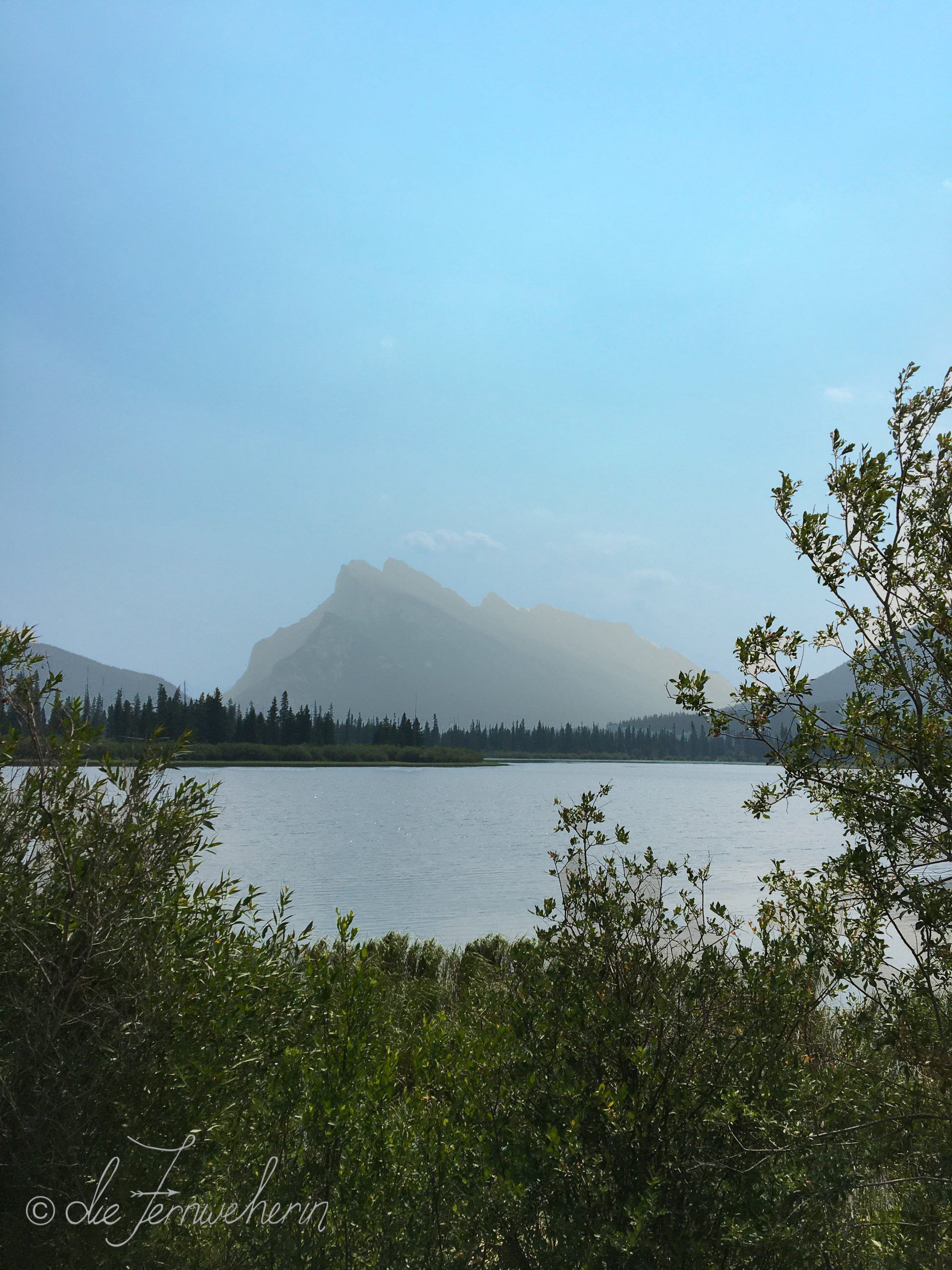
How to get there
<< contents
driving
To get to Lake Minnewanka from the town of Banff, simply head northeast on Banff Avenue (away from the centre of town). Continue over the highway overpass, and the road becomes Lake Minnewanka Scenic Drive. Because this is a loop road, it doesn’t really matter which direction you take—either one will lead you to Lake Minnewanka—but I personally recommend driving up past Two Jack, and then heading back down past Bankhead. So, when you come to the second T-intersection (the one after Cascade Ponds), turn right and continue along until you see the small parking lot for Two Jack Lake on your righthand side. Pull in here for a quick photo stop if you wish, then head back up the road another 2.5km to get to the Lake Minnewanka parking lot.
To go back down along the other half of the loop (open from May through October), simply turn right out of the parking lot. Should you wish to stop at it, Lower Bankhead will be on your lefthand side about 2.5km down the road. Otherwise, to continue to Mount Norquay, turn right when you reach Hwy 1, then take the first exit and turn right onto Mount Norquay Scenic Drive. The viewpoint overlooking Banff is on your righthand side after the switchbacks; the main parking lot for the ski hill is about 500m further along, also on your right; and the secondary lot for the sightseeing chairlift and the tubing park is on your left another 200m down the road. To get back to Banff, head back down the road and straight across the overpass.
Vermillion Lakes Road is just off of Mount Norquay Road, between the train tracks and the highway. Depending on when you decide to visit, the turnoff will either be on your right (if you are heading towards Banff from Mount Norquay or Lake Minnewanka) or your left (if you are leaving Banff). There are several places along this scenic route where you can pull off to the side in order to take pictures. If you’re planning on staying a little longer, there is also a small parking lot on your lefthand side about 3km along that you can use; simply walk back along the road a little ways to reach one of the benches (or docks) to sit on and enjoy the view.
public transportation
Lake Minnewanka can be accessed from May to September using Roam Transit Route 6, which also stops near Two Jack Lake, but does not travel along the western half of the loop road (no access to Bankhead). This is considered a local Banff route, so tickets are $2 one-way per adult, or $5 for a 1-day pass, and the trip takes about 25min from downtown Banff.
Mount Norquay operates a free roundtrip shuttle for patrons of the ski hill, tube park, sightseeing chairlift, or Via Ferrata. It stops at the Banff Train Station parking lot and three locations in downtown Banff, and takes 15-20min to reach the facility.
There is no public transportation to Vermillion Lakes.
other options
< driving
Both the Lake Minnewanka loop (15km) and the scenic route along Vermillion Lakes (9km) are popular biking routes. The former is only really do-able from late spring to early fall, but the latter is accessible year-round, especially if you have a fat bike. Both routes can be easily accessed from town, and, if you’re up for an even longer bike ride, from Canmore via the Banff Legacy Trail that runs parallel to Hwy 1. Otherwise, you can park at Cascade Ponds to cycle up to Lake Minnewanka, and at either the Fenlands Trail lot or the nearby Rec Centre to get to Vermillion Lakes Road.
<< contents
Up next…
In Part 3, the final post of this itinerary, I expound on the true gems of Banff National Park. You do not to want to miss out on these real-life treasures!
<<< the best banff itinerary: part 1
the best banff itinerary: part 3 >>>
Thank you so much for reading!
Happy travels,


